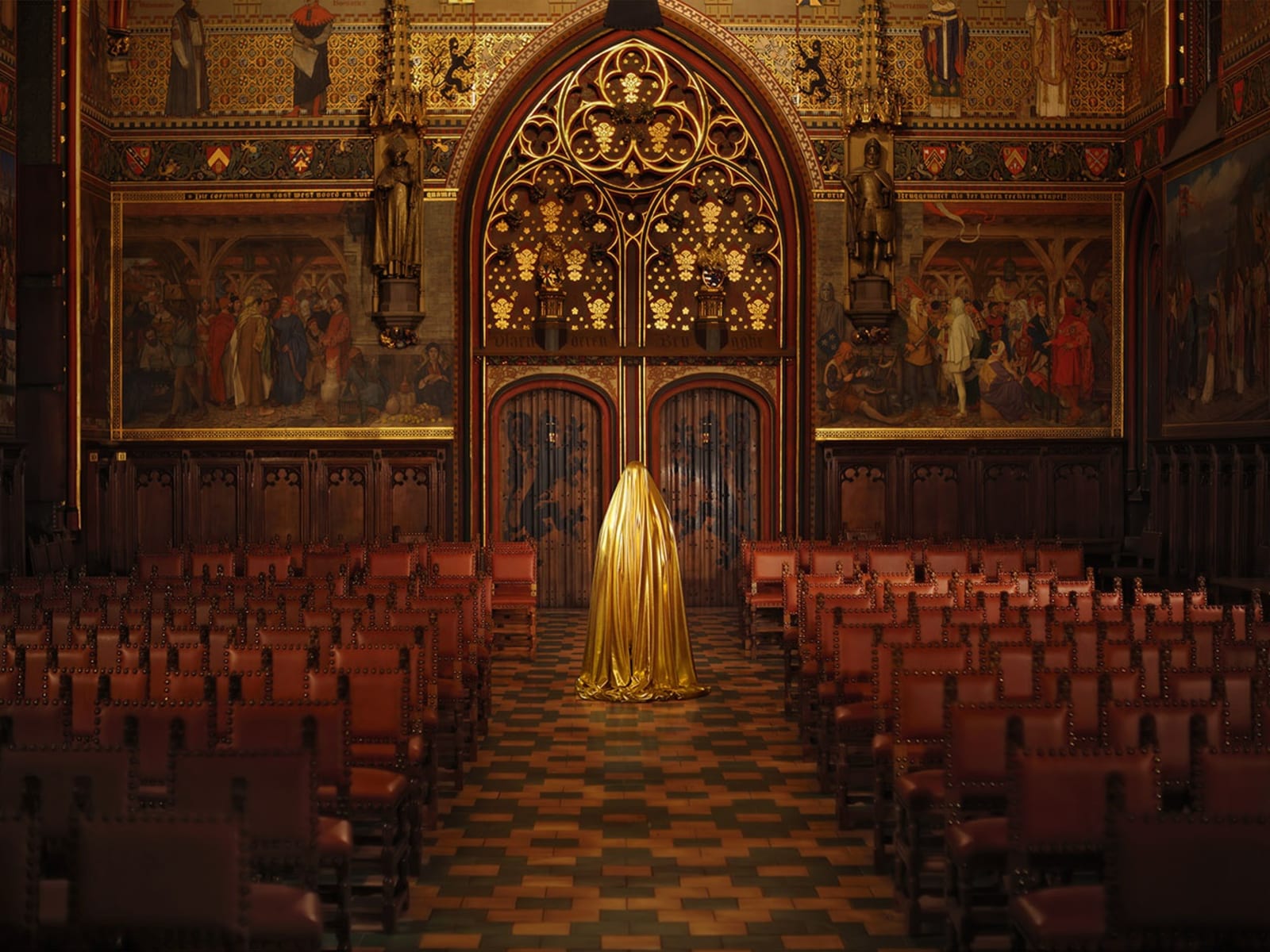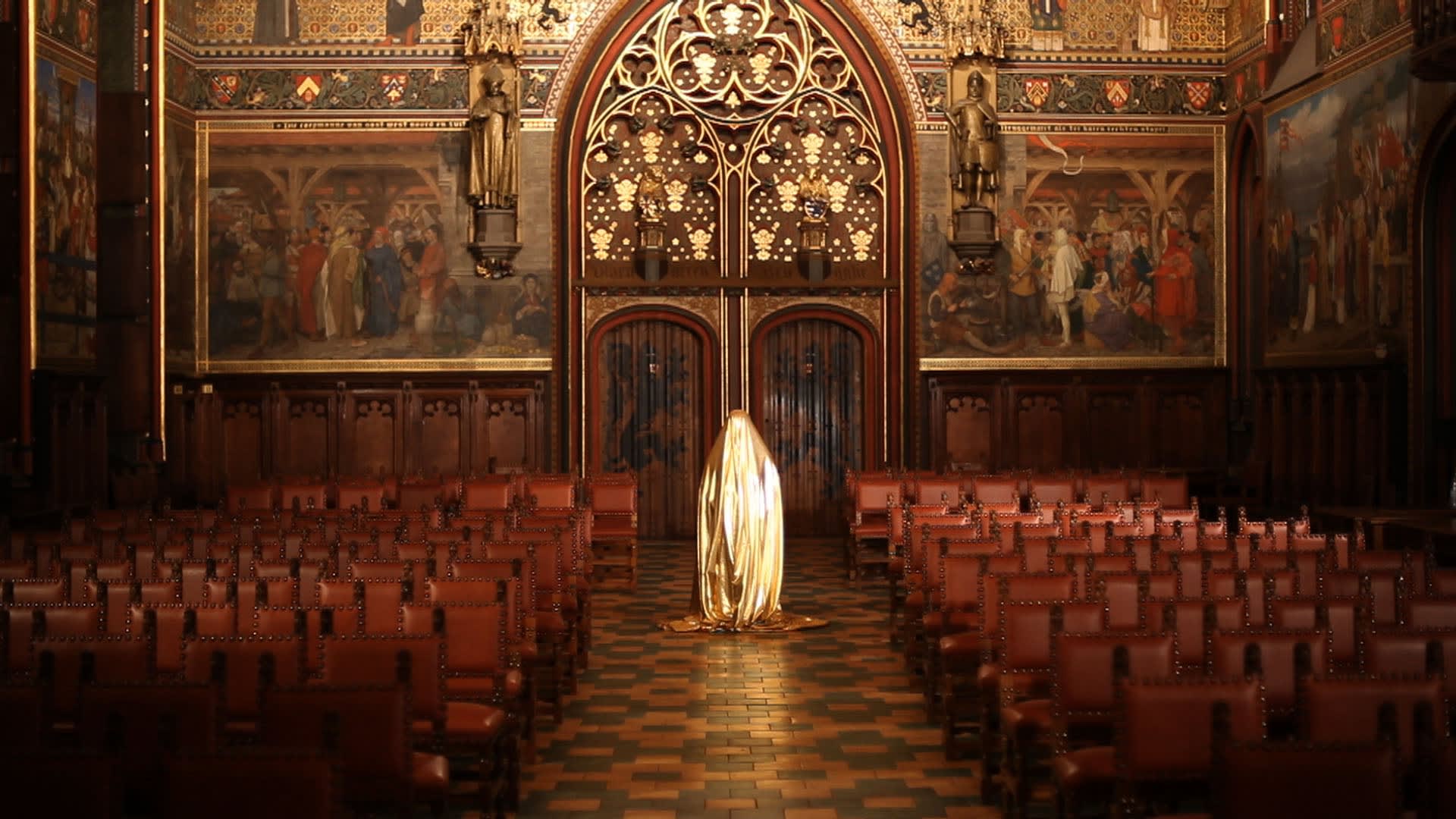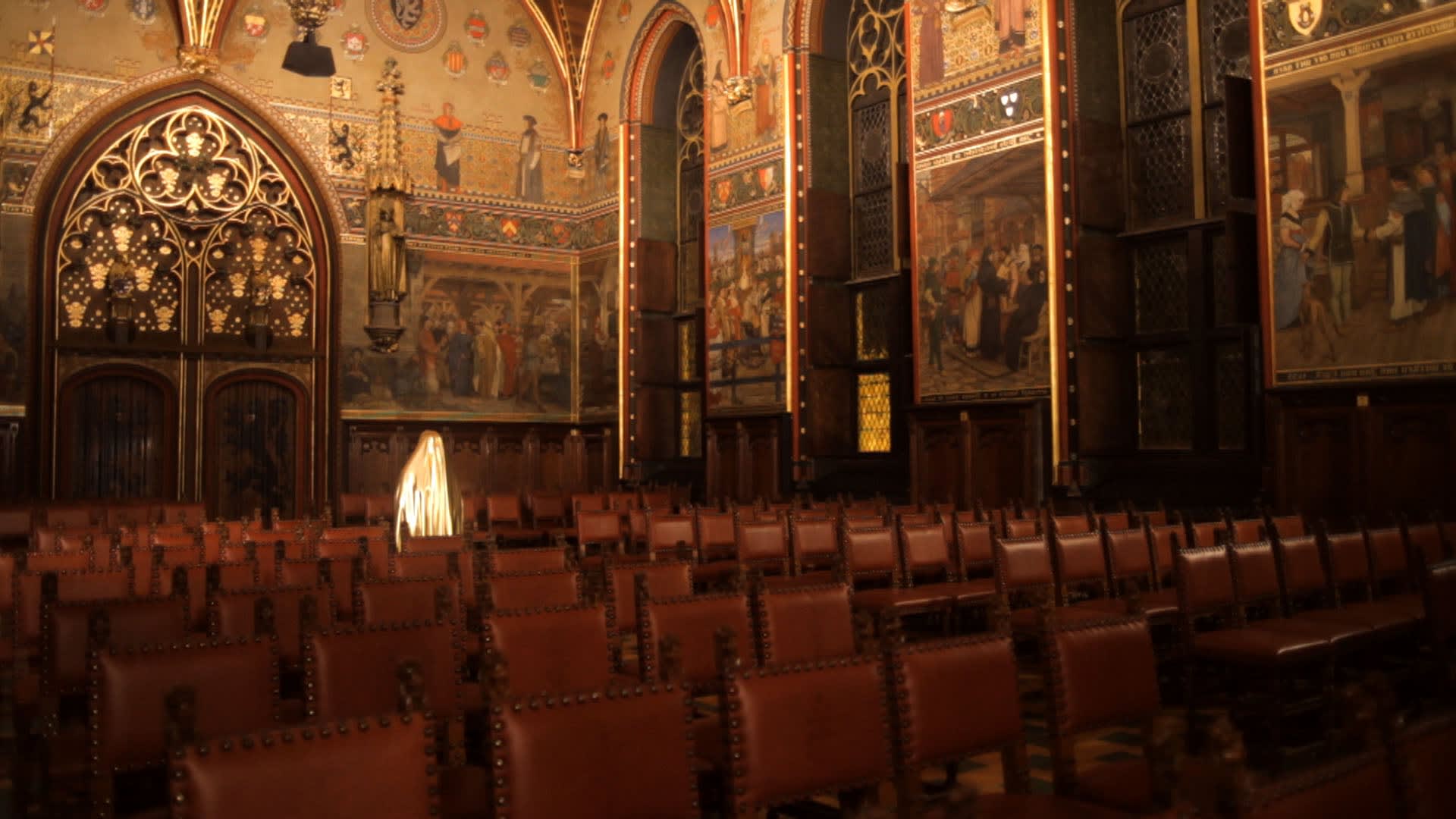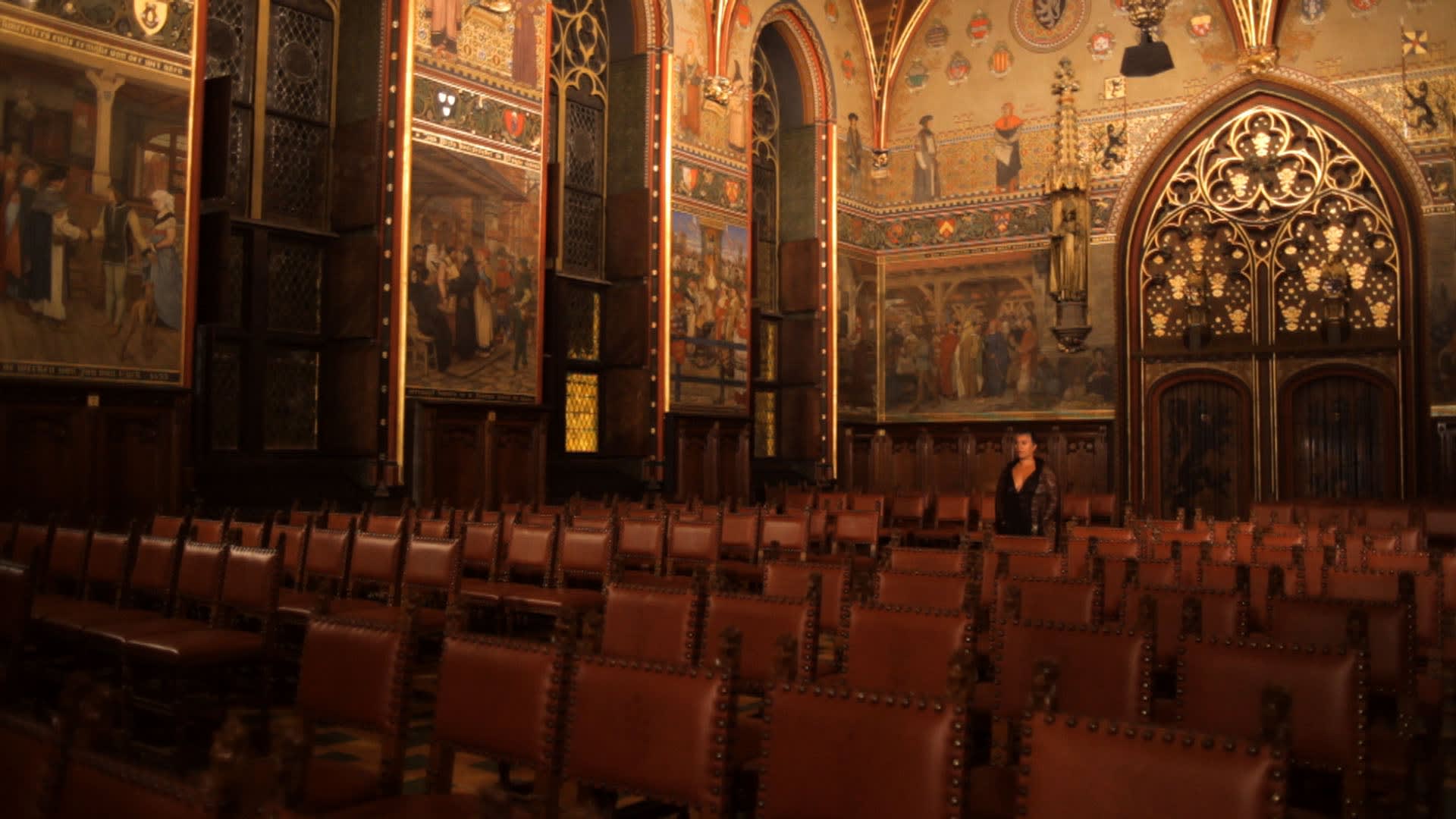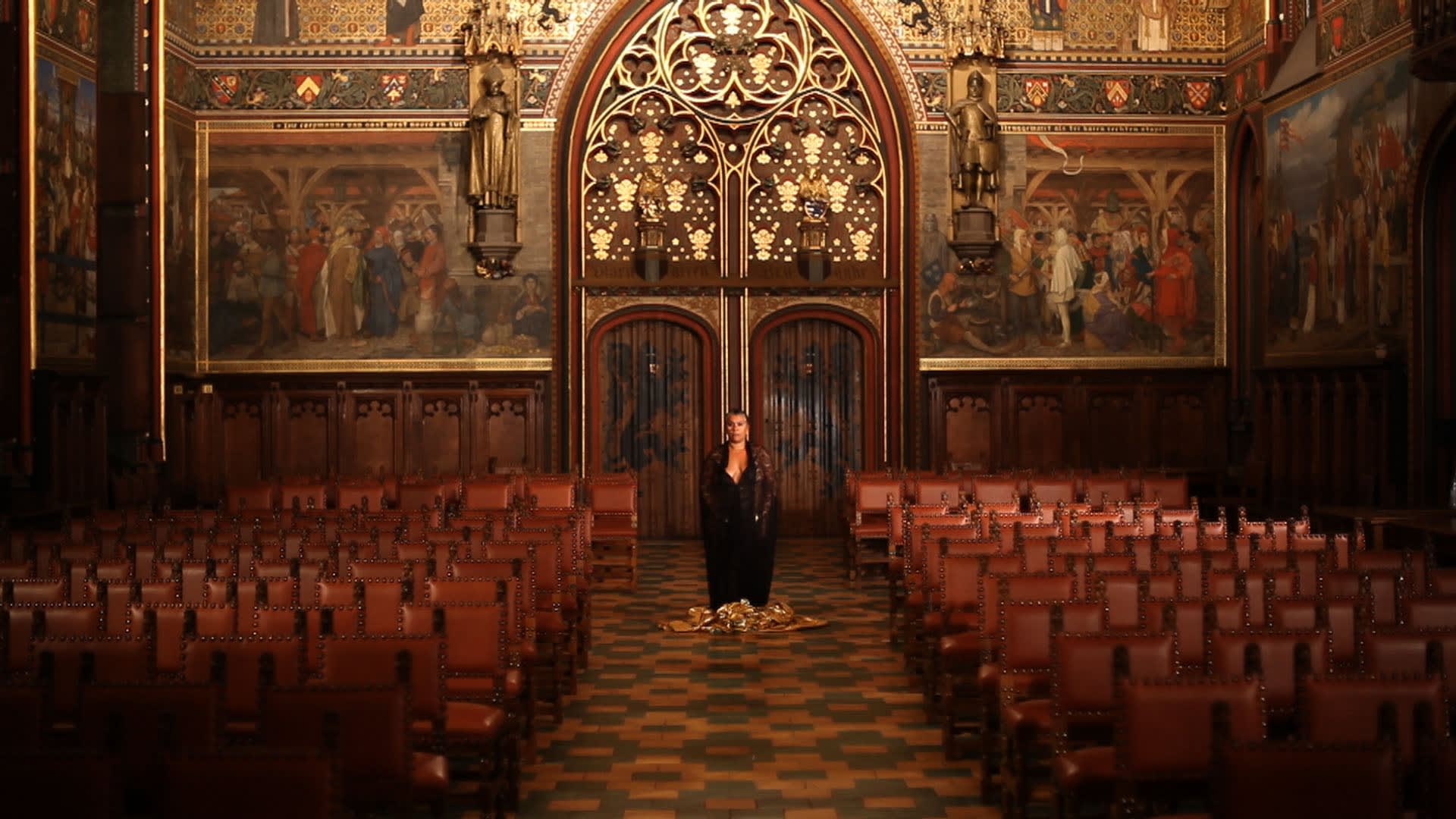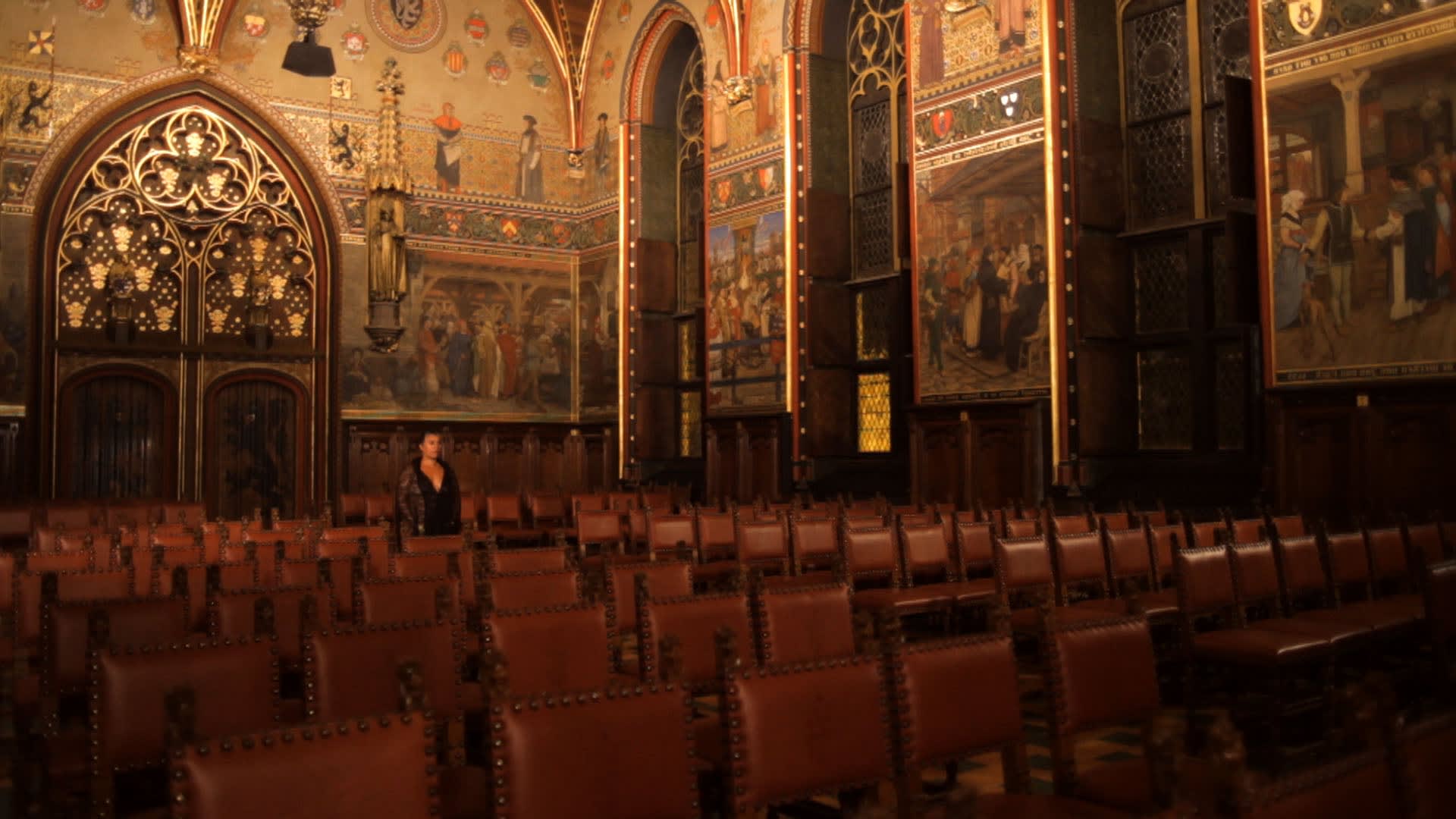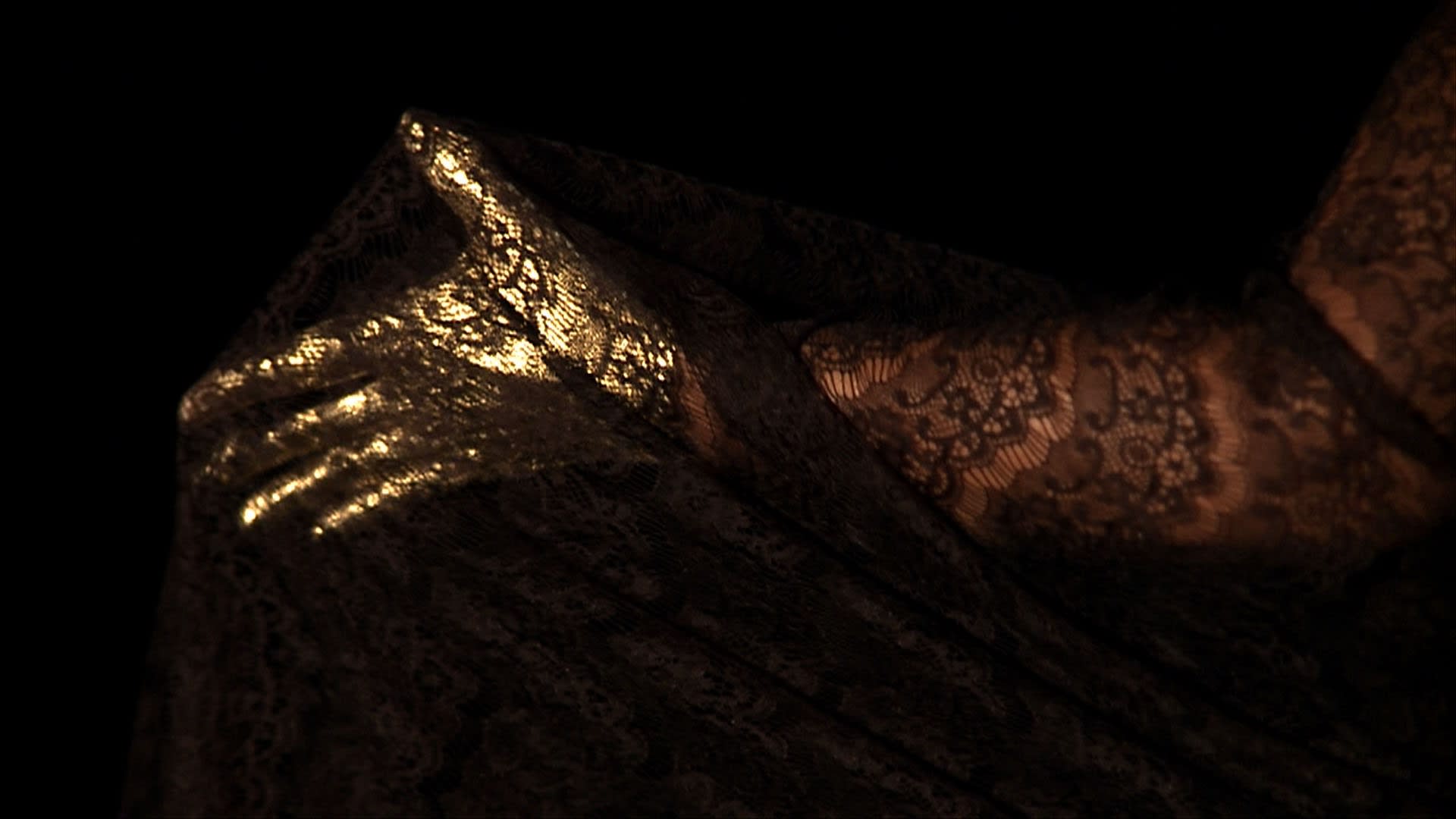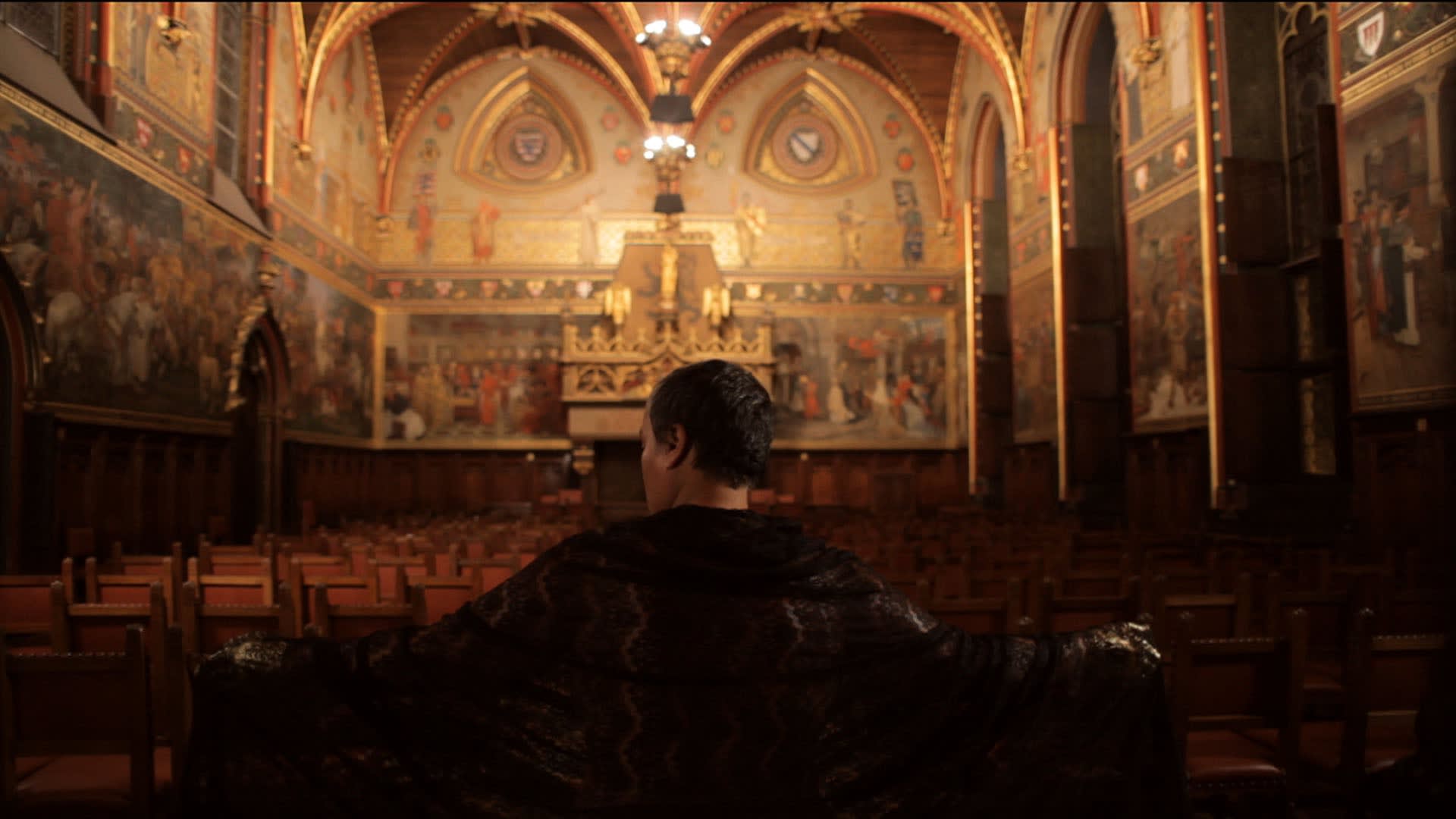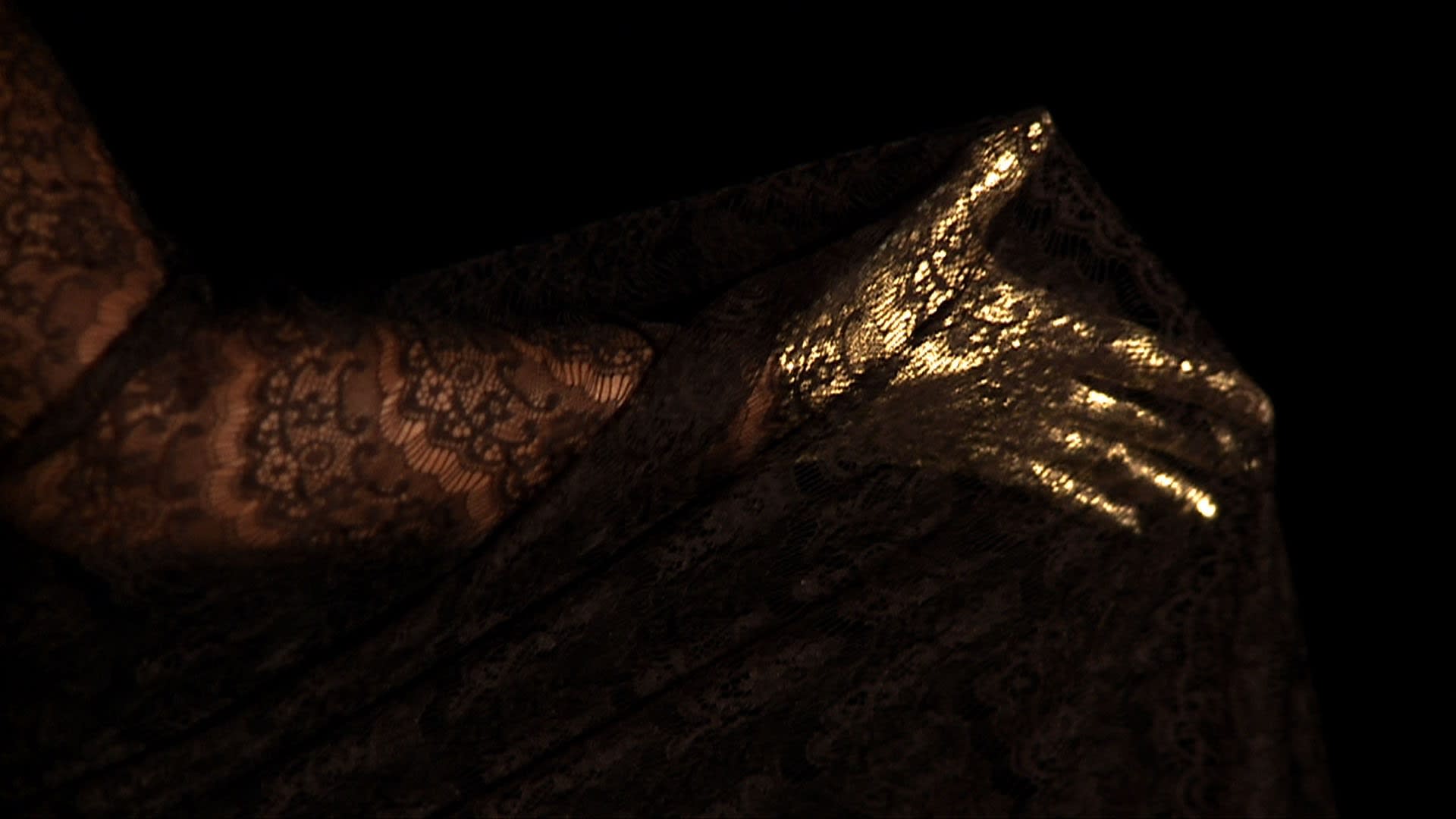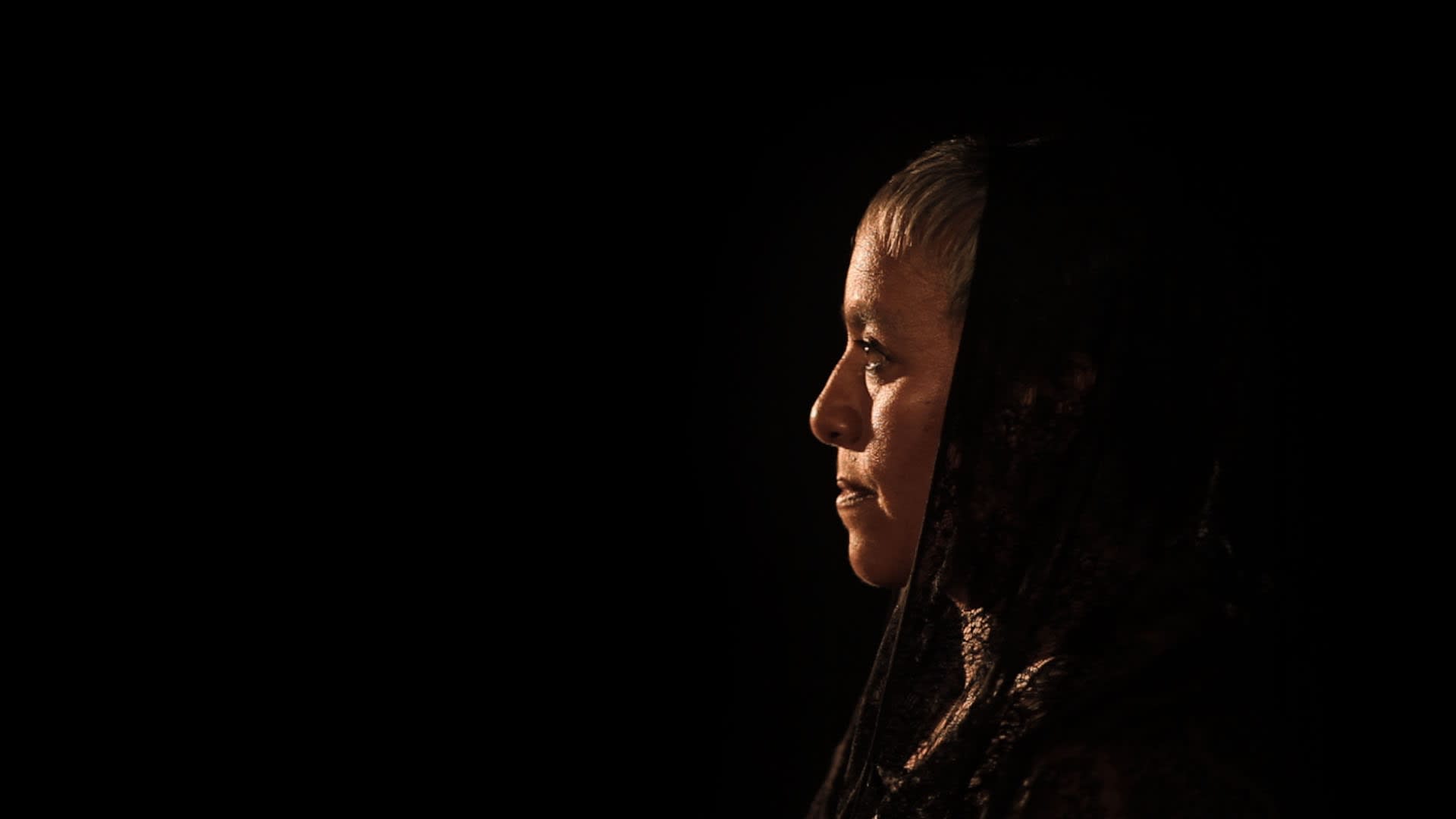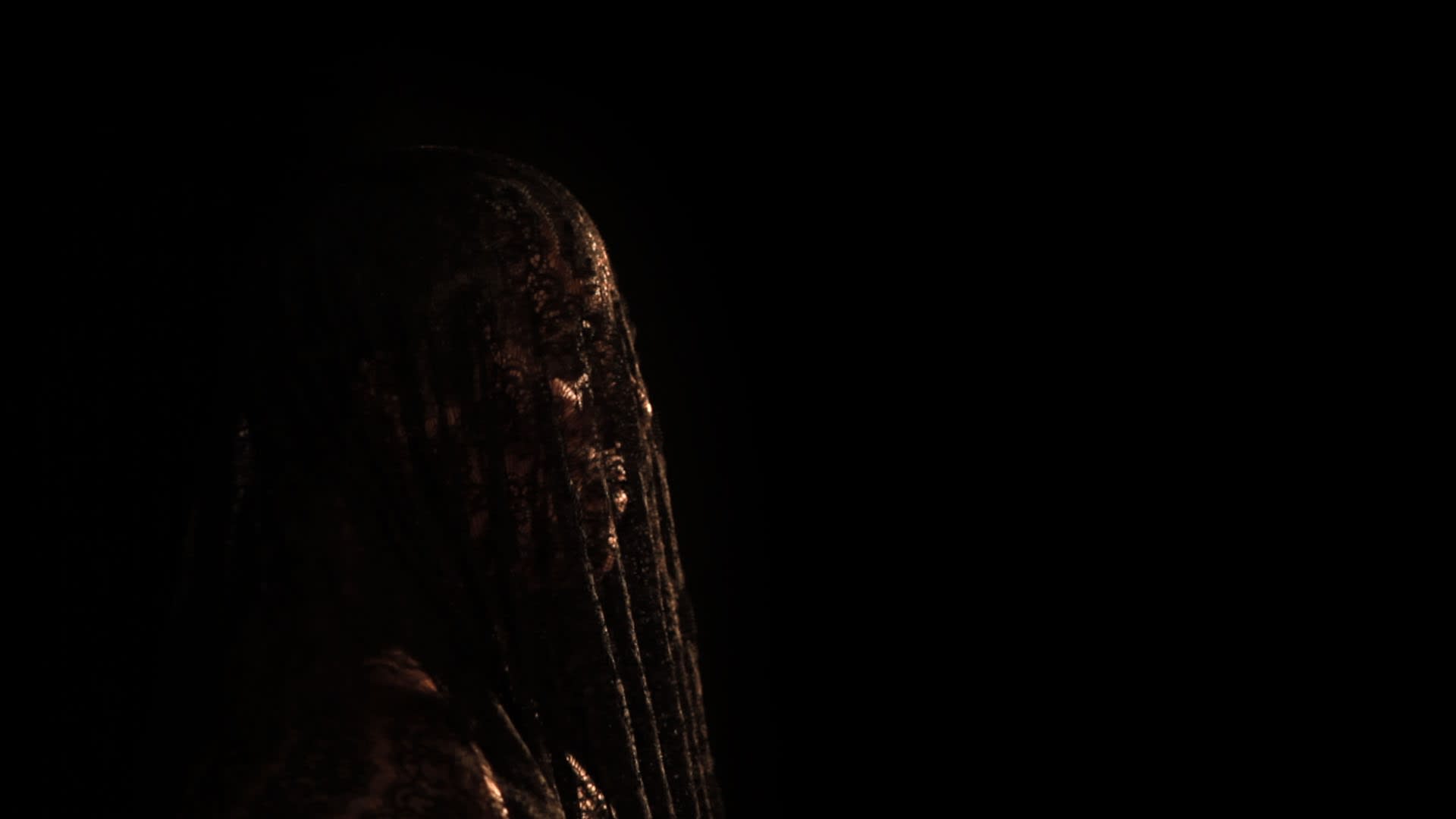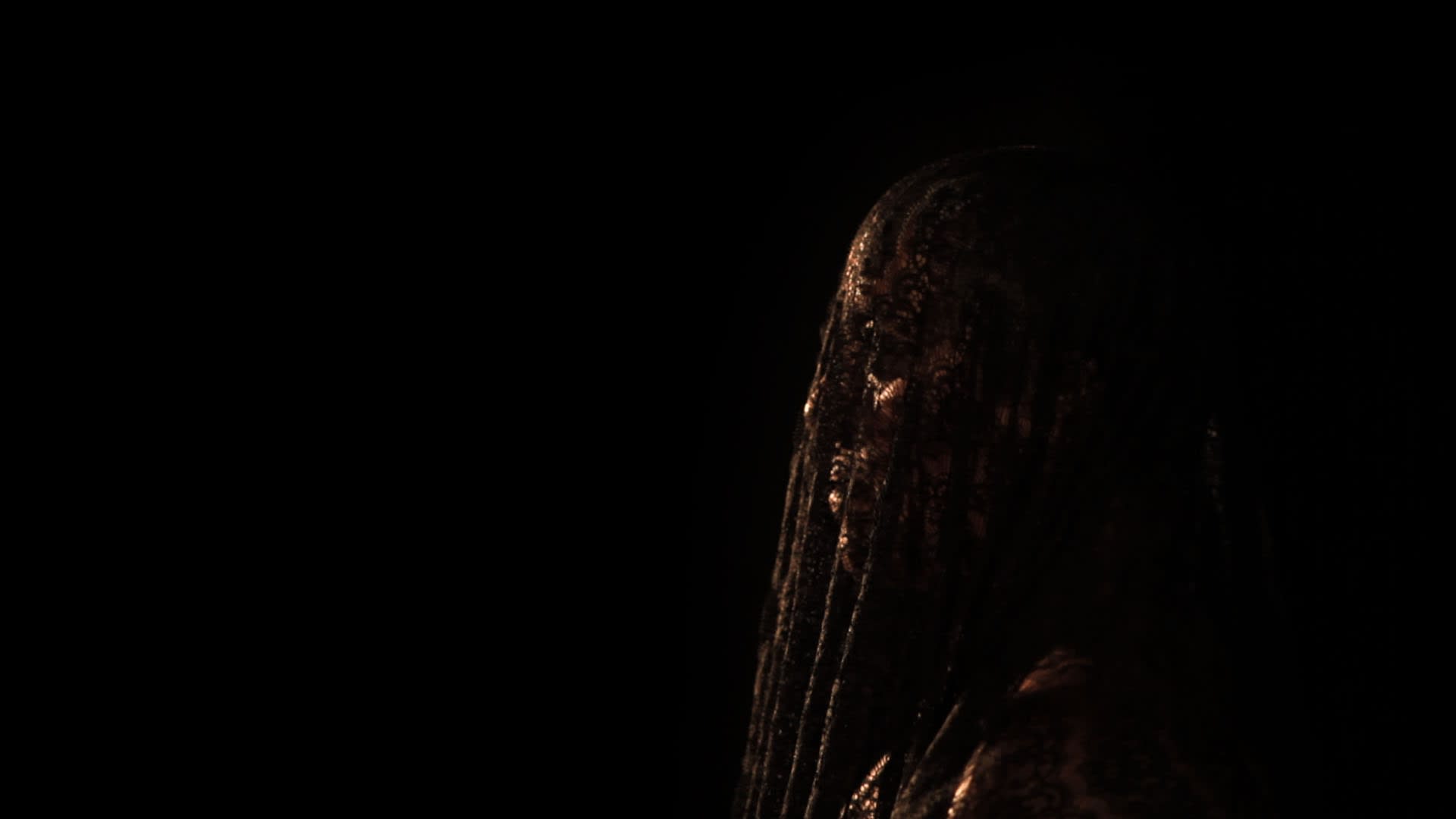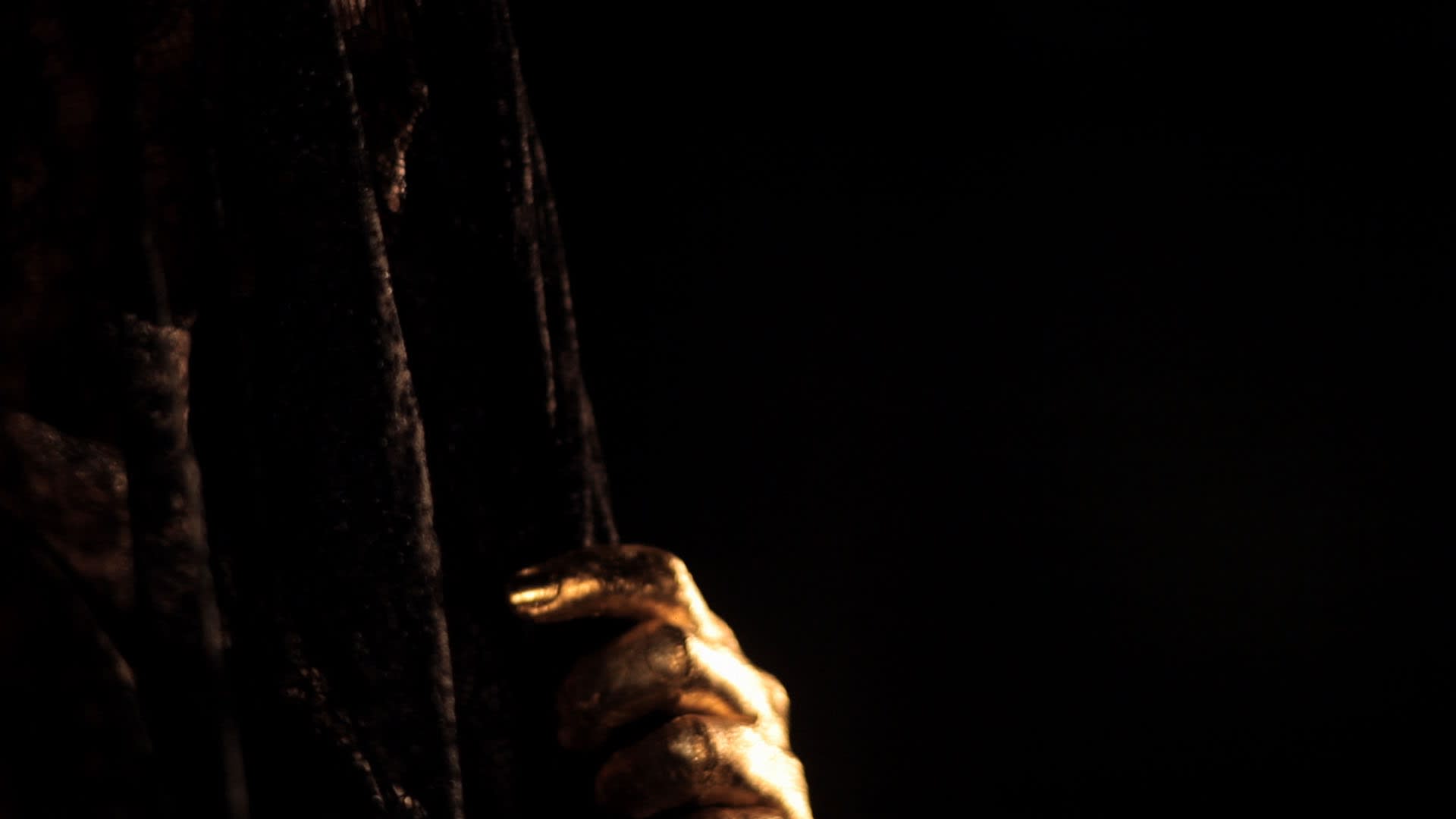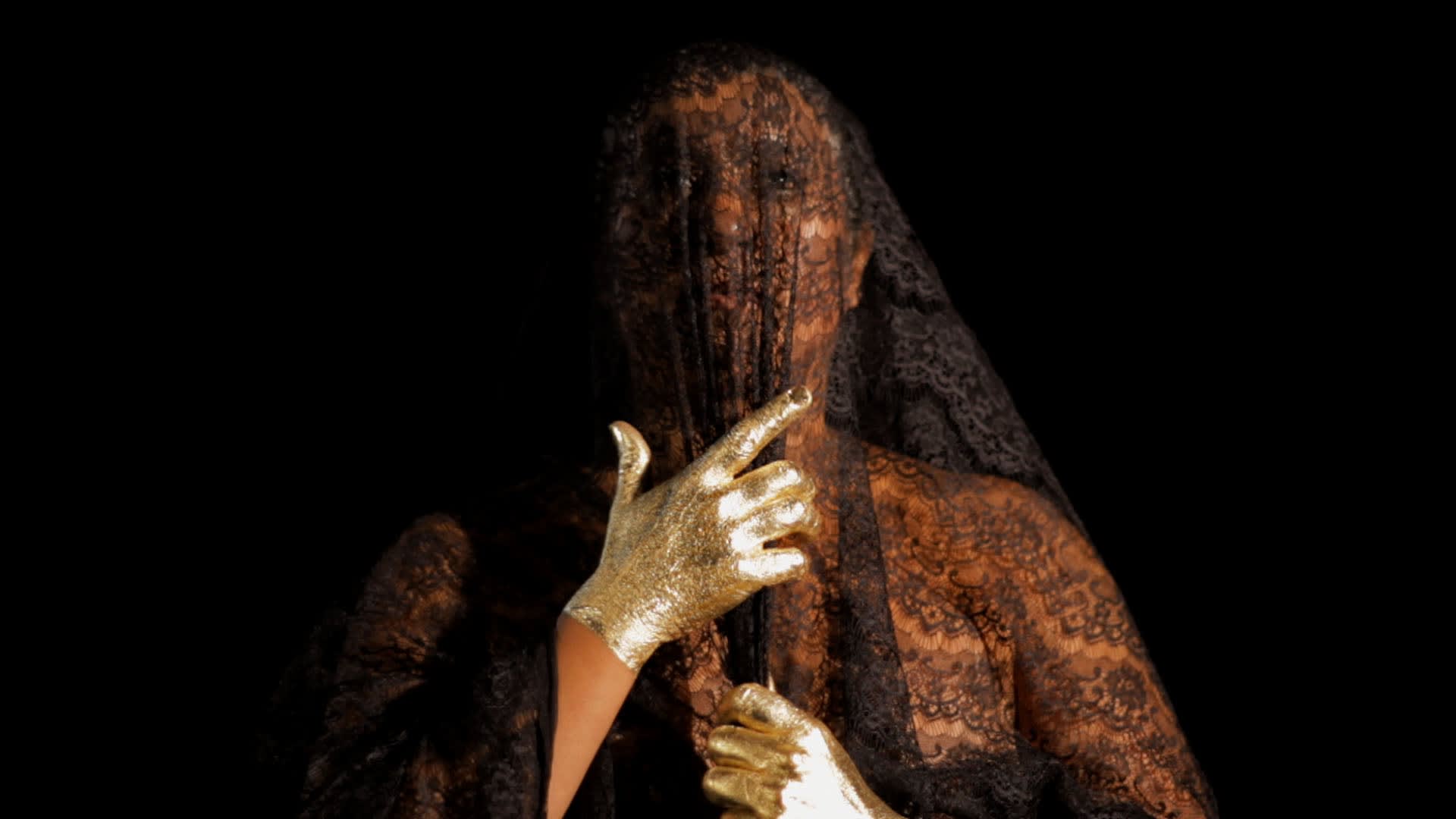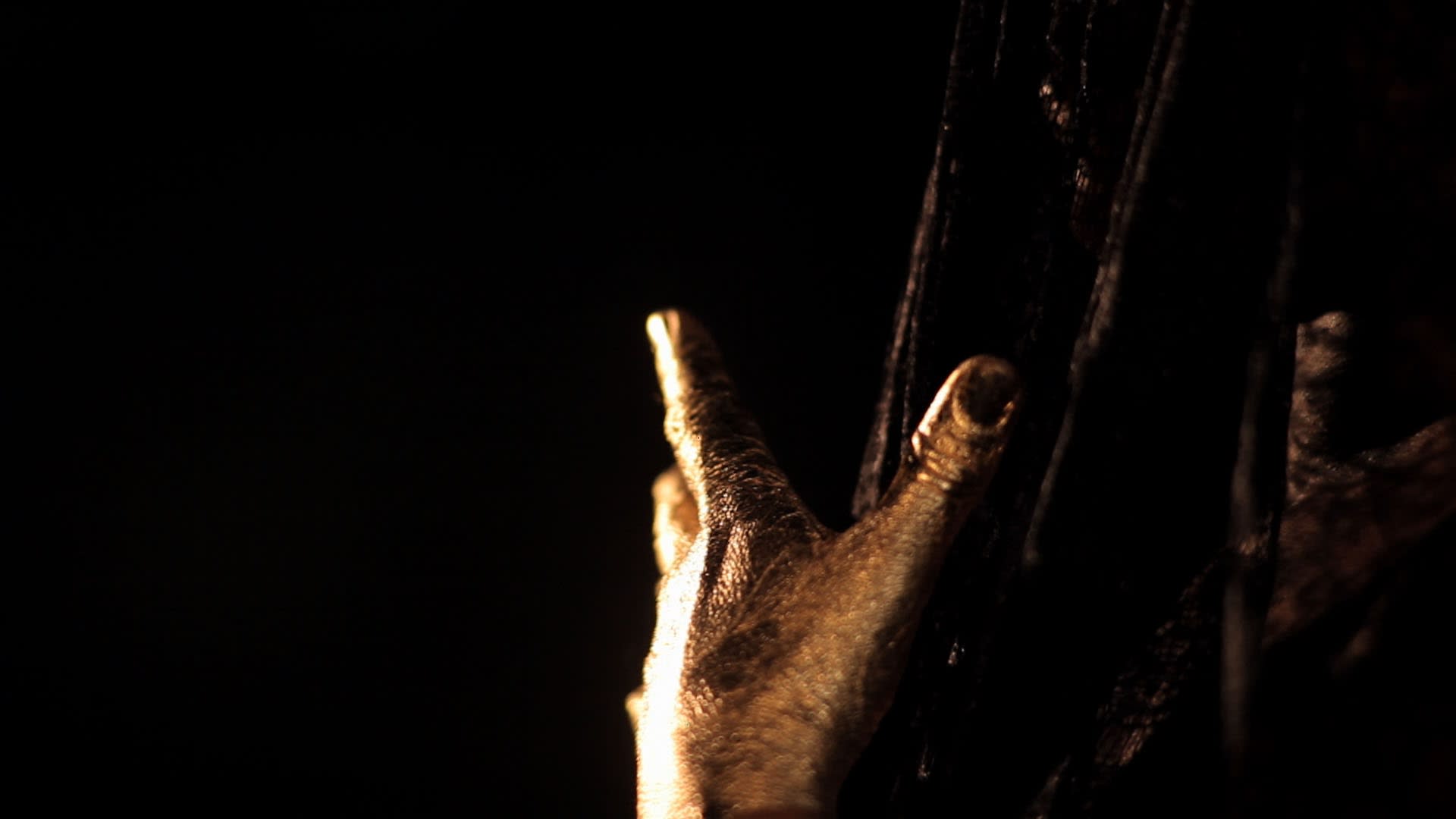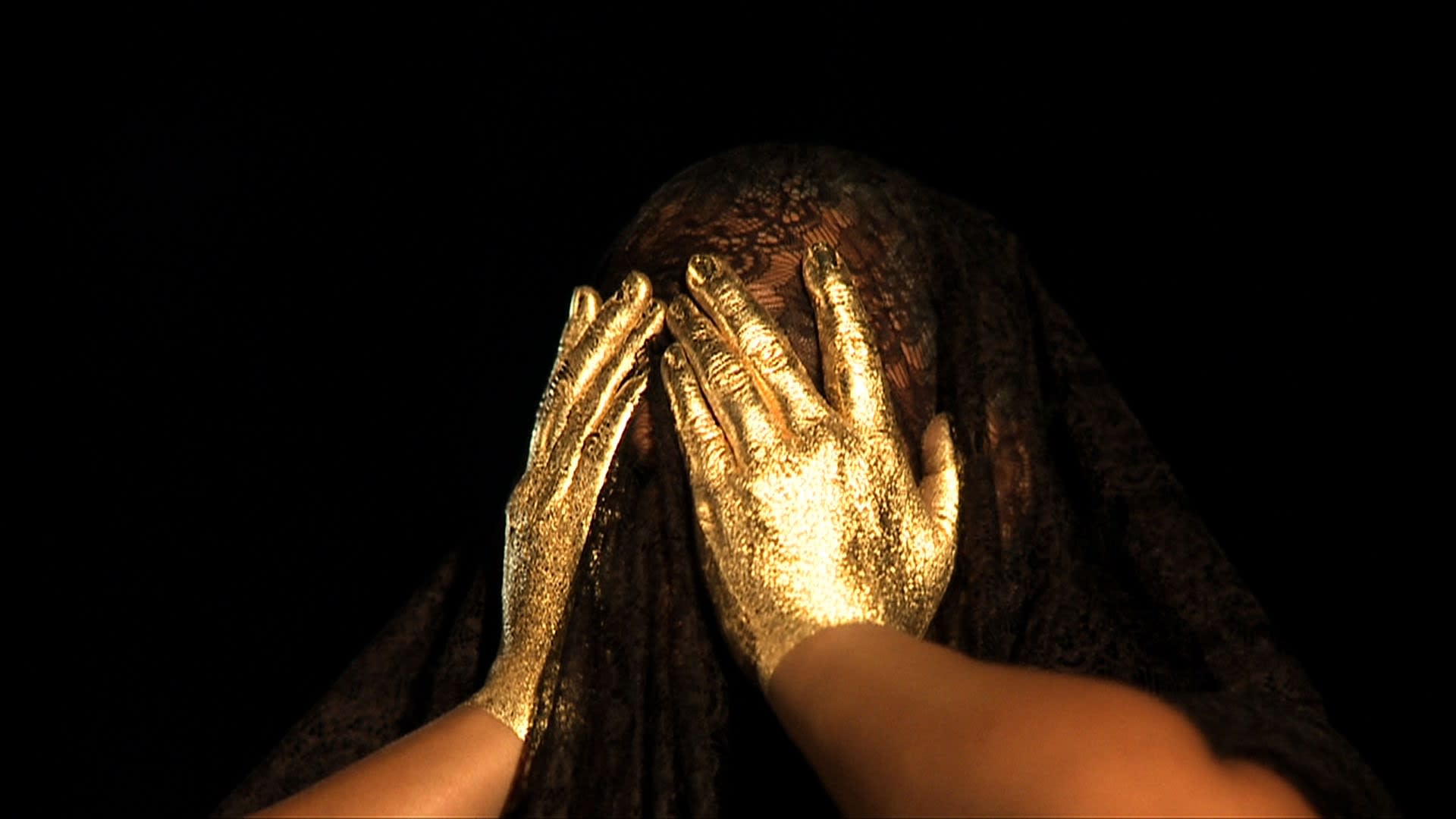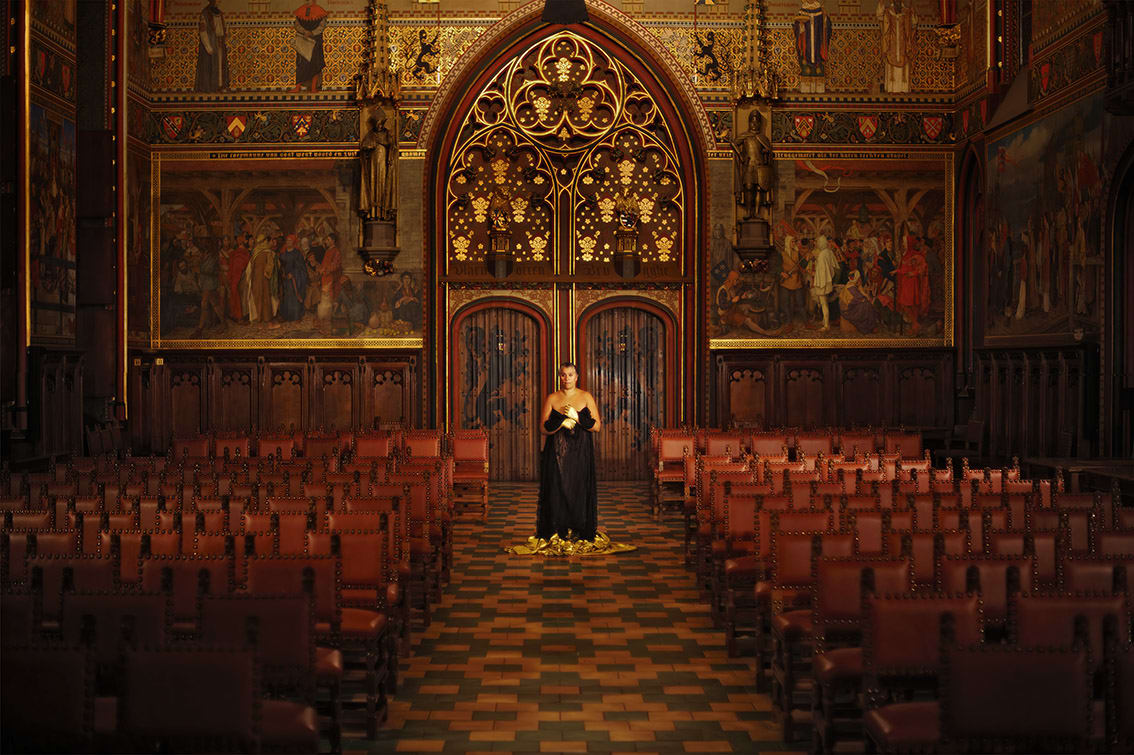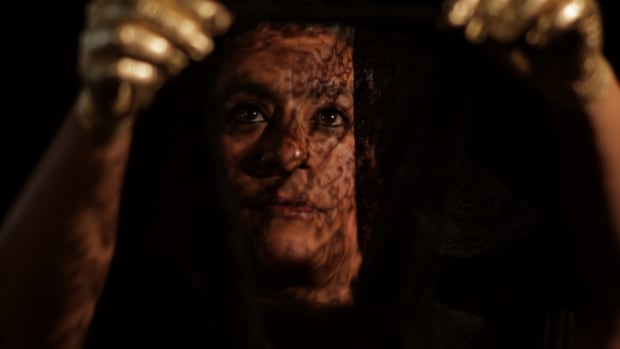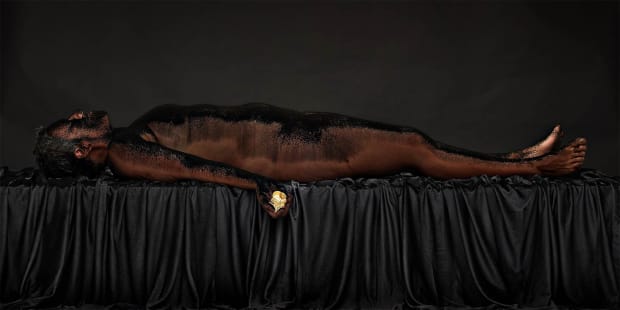-
-
"Issues of race are unavoidable, especially since the body was a primary site of identification in terms of racial classifications in the South African context and therefore cannot be overlooked.
What interests me more, however, are ideas of ambiguity and mutability in relation to the concept of identity, and the various subject positions we occupy, which are always fluid."
- Berni SEARLE
-
Berni SEARLE
Interlaced, 2011Three-channel video projection
HD video, sound, colour, synchronised8 minutes 30 secsEdition of 5 + 2APsFull video here. -

Berni Searle, Interlaced, 2011. Video still.
-
"Searle alternately becomes and then transgresses personifications of the Virgin Mary, a Bruggeling (citizen of Bruges), a veiled Muslim woman, a mystic. Searle interrupts the ceremonial performance of the Gothic Chamber with her own rites, and a space of orchestrated histories and municipal governance becomes witness to Searle's civic protest."
- Julie McGee
-

Berni Searle, Interlaced, 2011. Video still.
-
-

Berni Searle, SEEKING REFUGE, 2008. Video still.
-
Berni SEARLE
SEEKING REFUGE, 2008Single channel video projection
Colour, sound5 minutes 56 secsEdition of 5 + 2 APsFull video here. -
"Rather than dealing with the migration of people from neighboring African countries, which is often accompanied by traumatic experiences and drastic consequences, I chose to focus on the tenacity of people to survive in places which are often threatening and harsh, highlighting the instinct for survival and the will/desire to make these new places of encounters ‘home’."
- Berni Searle -

Berni Searle, In wake of (from the 'Into the dark' series), 2014
-

Berni SEARLE
To hear, to see, to speak (From the 'Into the dark' series), 2014Archival digital printsFrom left to rightL 45 x 45 cm, 45 x 55 cm, 45 x 45 cmEdition of 5 + 2 AP -

Berni SEARLE
In wake of (from the 'Into the dark' series), 2014Archival digital print on Hanemuhle PhotoRag paper200 x 100 cmEdition of 3 + 2 APs
Saltoun Online
